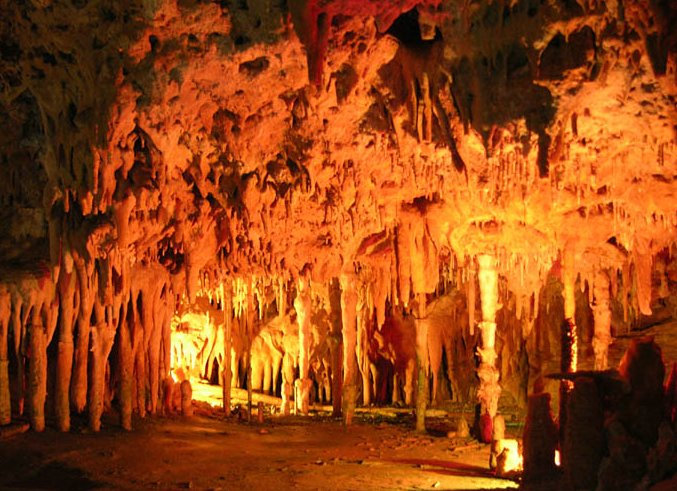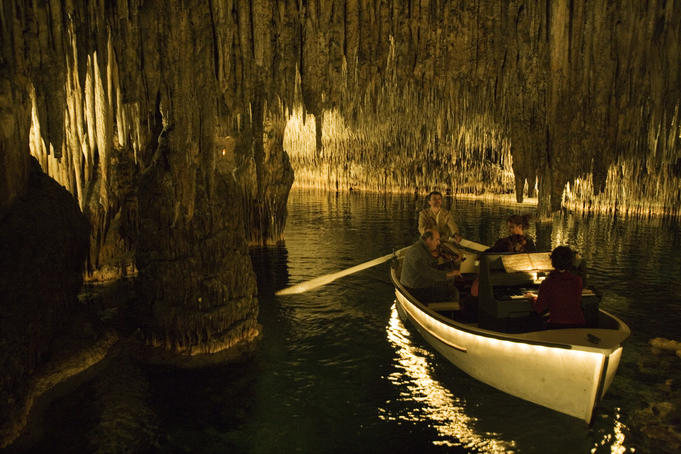
Having visited the Languedoc-Rousillon region of France many years ago, a region which is honeycombed with caves and caverns, forming one of the richest areas of subterranean systems in France, I was intrigued to see what Spain had to offer and Mallorca is one of the places that has some of the most beautiful hidden treasures the country has to offer, so on my last trip to the island, I took advantage and decided to visit them. The Artá Caves are located on the coast in the municipality of Capdepera, in the Cap Vermell, surrounded by mountains that tower over the sea. The caves have been visited since times gone by and it is very likely that the island’s primitive inhabitants knew of them, as did the various populations that later inhabited the island. Going through the towering entrance, we gain access to the chamber known as the Vestibule or Entrance Hall, where countless stalactites with prodigious shapes and extraordinary proportions hang from the high arched ceiling. Tall stalagmites rise up gracefully from the floor. They vaguely resemble human forms, mysterious, motionless, rigid visions that are indifferent to human gazes, and have that imposing superiority of nature’s marvelous creations.
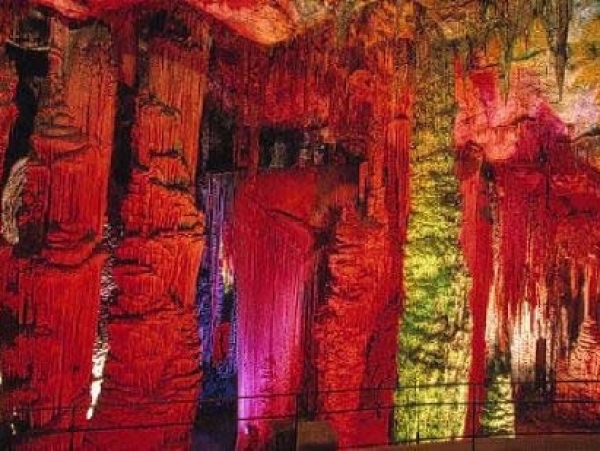
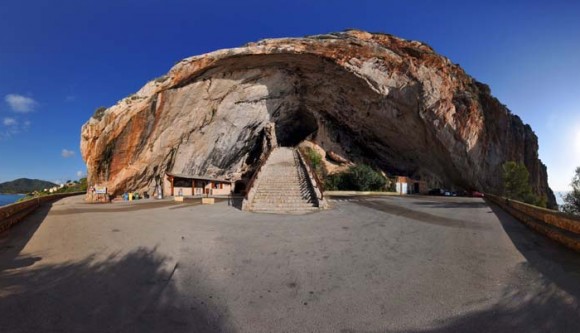
Hidden inside stones, rocks and mountains are hollows or crevices of varying sizes. Even in the most compact minerals minute cavities are visible to the naked eye. In the mountains it is unusual not to find these hollows of assorted shapes and sizes, some of which are completely closed off while others have openings to the outside world, obstructed to a greater or lesser degree by rockslides. The origin of these concavities can be found in the following phenomena: Sudden dislocations of the earth or the constant action of groundwater.

The formation of mountain ranges during the different geological periods and earthquakes are two of the main causes of the formation of caves. Groundwater flowing along impermeable beds slowly undermines the upper clayey layers until they eventually collapse, leaving a space covered by other calcareous layers that are sustained by their arched forms. The formation of caves is observed in almost all types of known terrain but where they are most abundant is in calcareous rocks, where they acquire gigantic proportions and take on extraordinary forms. If caves do not have an outside opening, water penetrates their walls producing the same effects. Once the cave has been formed as a result of either of the phenomena mentioned, water circulating above the cave, containing calcium carbonate and smaller amounts of magnesium, filters slowly through small fissures giving rise to the following features: when a drop of water appears on the roof of the cave, it leaves a deposit – as a result of excess carbonic acid being released – of the calcareous material that it carried in solution, which is the material from which a stalactite is slowly formed. When the drop falls to the ground it still contains some calcium bicarbonate, which is deposited on the cave floor to form the stalagmite. After many years these two formations may eventually come to meet and form a solid column, which will often have a bizarre, fantastical shape. Furthermore, before evaporating, the fallen drop slides across the ground creating the hard, sinuous surface that forms the floor of almost all caves and underneath. The age of the geological formations is not always in relation to their height. Sometimes it is possible for a four meter high stalactite to have been formed more quickly than one two meters high or even one a meter high. They are dark, silent places, where it is almost impossible to hear the fall of the minute drop of water that appears, clean and transparent, at the end of the stalactite and expands, falls and slips across the sinuous floor, creating numerous features as it goes. Nature is at work here, discretely and silently, and so slowly that the advances of her mysterious work are measured in centuries. The powerful chemical energies and dynamics of the various elements that circulate around the silent enclosures are the invisible architects that raise arcades, porticos, statues and columns, seemingly following preconceived aesthetic ideas, as if wanting to reveal the typical features of diverse artistic manifestations. Next to these magnificent, imposing creations of nature our insignificance is apparent.
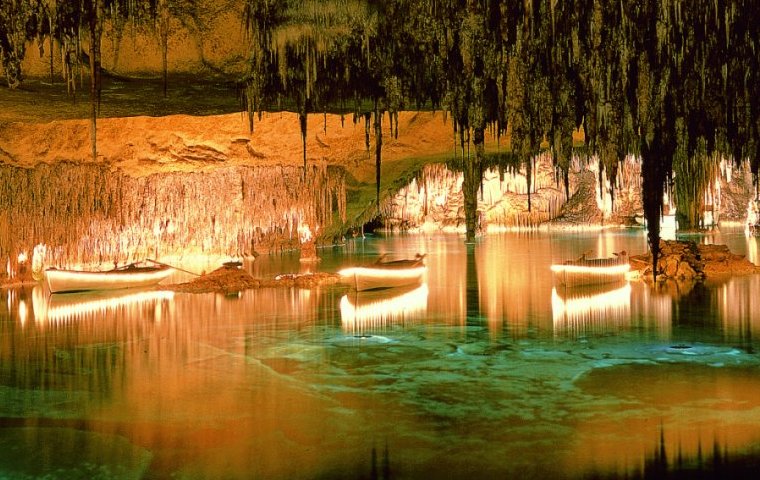
Located on Mallorca’s east coast are some even bigger caves; The Caves of Drach and are without doubt one of the island’s most outstanding tourist attractions. Hidden within the caves is Lake Martel, considered to be one of the largest non-subglacial subterranean lakes in the world and certainly the largest in Europe.
The Caves of Drach were known in the Middle Ages and explored in 1880 by M.F. Will and in 1896 by E.A. Martel, who discovered the cave with the lake that bears his name, a crystal clear water mass which is about 170 m in length and 30 m in width and up to 12 meters deep in parts. The cave was remodelled for visitors between 1922 and 1935: a new entrance was made, paths were designed and ladders built. An electrical lighting plan designed by the engineer Carles Buigas was also installed. The caves extend to a depth of 25 m, reaching 2.4 km in length. The four caves, called Black Cave, White Cave, Cave of Luis Salvador, and Cave of the French, are all connected to each other forming an underground palace.
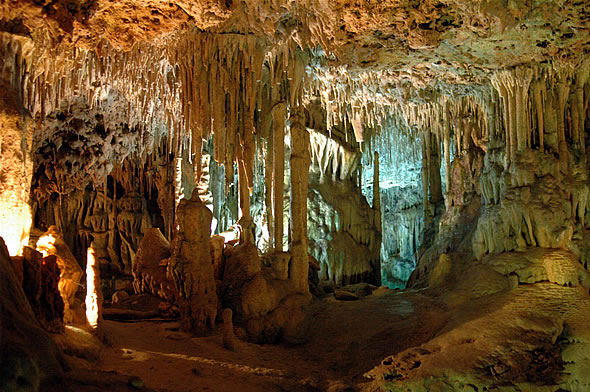
Guided tours take around one hour and follow a 1.2 km path. The tour includes a classical music concert and a boat trip across Lake Martel which is very surreal. The temperature inside is around 21ºC, with a relative humidity of 80%. The lands on which the caves are found date back to the Miocene period and inside they are just spectacular.
